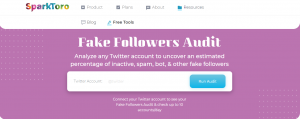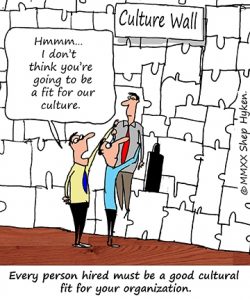There is so much to do in mobile app marketing but to achieve the best results and boost your app sales, you need to concentrate on only two or three digital channels. The first step in choosing the right social media network is to analyze your target audience and try to define where these people hang out on the Internet. Don’t rush to create every possible social account before you find out what is popular among your target users. Effective mobile app marketing implies selling to an audience of at least 5,000 people. If the Facebook groups and pages in your field have a humble population of 10–100 people, you shouldn’t opt for this network. Instead, look at other options.
Let’s look at what social media channels such as Facebook, Twitter and LinkedIn have to offer for promoting your mobile app.
Facebook mobile app marketing

Photo credit: boltron– / Foter / CC BY-SA
Facebook is a huge community and nobody can it ignore these days. It is almost impossible to engage all of its users, but your task here is to hook the target users and get them to buy your product or service.
- About half of all Facebook users log on to the platform every day.
- In total, 20% of all users live in the US.
- Your target audience is very likely to use Facebook quite often.
- Over 100 million users open Facebook with their mobile devices.
- Around 10–15 million users like company pages every day.
There are several goals you should have in front of you when working with Facebook. First, your potential clients should be able to find and download your mobile app easily. Second, you should build a good relationship with your clients and become trustworthy.
Creating a Facebook fan page account for your mobile app takes 2 or 3 minutes. After naming the page, add the best possible description for the app, and don’t forget about videos and photos. Include a link to the App Store and Google Play Store – this is really important! It’s better to use direct links.
Ask your team, friends and colleagues to like your app page first, as your own networks can make the page go viral. Page likes are transmitted to everyone’s newsfeeds. After that, you can shift to Facebook advertising – use targeting to show your ad to your potential clients. But be careful, as you can still spend a lot of money on people who are visiting your page only out of curiosity. Don’t hurry and monitor how your social engagement influences the sales volume. Attracting subscribers is very different to attracting interested customers.
Twitter mobile app marketing

Photo credit: ~Ilse / Foter / CC BY-NC-ND
Twitter is all about being specific as you are always limited to 140 symbols. It enables you to send short messages to a large group of users. You can solve several marketing tasks with Twitter:
- Create a list of followers who anticipate the publication of your mobile app. Look for the users who follow mobile app accounts similar to yours, or those who are interested in your particular topic. Take part in someone else’s dialogue by inserting smart tweets. Don’t forget to mention the mobile app you’re working on. Start by being useful, and then talk about your own project.
- Support the community. If your mobile app has already been published, add a Twitter logo to your website and ask people to follow it. This is how you can keep up the interest in your product. Add a Twitter handle to the other social networks where you have subscribers.
- Send relevant messages to your followers. Share the link to your press release with your followers, and ask them to retweet it. This is a good way to spread the word about your mobile app and create a sense of community among users with similar interests.
- Attract users to your mobile app website. When you have enough subscribers, invite them to visit your app’s website to read the product description or go directly to its page on the App Store. Ask them to check out and review the latest version of the app, which should have better graphics, sound, etc.
- Publish comments and questions about the app. Tweets help to deliver information about how to use the app and solutions to common problems. It helps to keep the discussion going.
Twitter has personal and business account types. The latter will work for your brand while the former are for personal messaging. Your page name should include both general terms (for you to be found) and your specific brand (for uniqueness).
Growing a contact base will take longer than a day or a week, so you should create partnerships with people who have many subscribers. For instance, sport apps can be promoted by sport celebrities with a good social following. Try to become friends first, and then ask for a partnership. There are definite risks, but if everything works out, you’ll get many target followers and a celebrity partner for other campaigns.
LinkedIn mobile app marketing
LinkedIn groups and discussions are a good way to find multiple business contacts plus interested customer and partners, too. Some groups have 10,000 participants! You can share your experience of mobile app development and hire new specialists to your team. Upload documents about your product and share them in your LinkedIn newsfeed. Again, building connections takes time. Find relevant discussions (for example, “What project am I working on?”) and add your comments.
LinkedIn also offers advertising, which is relevant for the growing segment of mobile B2B and productivity apps. LinkedIn has great targeting that even takes the job description and experience of your audience into account!
YouTube mobile app marketing
Most people prefer watching to reading, so creating a YouTube and Vimeo video is essential in selling your mobile app to potential users. Leave the link everywhere you hang out: discussions, forums, email footers, websites, etc.
Creating a video is a challenge but if you get trendy, the result will be amazing. You probably remember the videos about iPhone blending from Blendtec. Over 10 million video views guaranteed stable sales for several years. The video was provocative and easy to remember, so make sure your own video follows these important points:
- Your video has to be short – no longer than 2 minutes!
- Your video should be hooky, with relevant humor.
- Add a scenario with what you’re going to say to accompany the video.
- Use the right tools to edit the video. Most things you will need generally cost under $ 100. Adobe programs with additional bells and whistles are more expensive but add to your capabilities.
- Videos should work this way: problem –> solution -> demonstration. Describe the customer’s problem, describe the solution you have and include a short demo version to show what your mobile app is capable of.
- Add a call-to-action inviting people to your website or to a download page on the App Store, which has more details.
What social network would you choose for your mobile app? Maybe, you already have experience with mobile app marketing through social media. Add your comments!
Digital & Social Articles on Business 2 Community
(138)
Report Post







